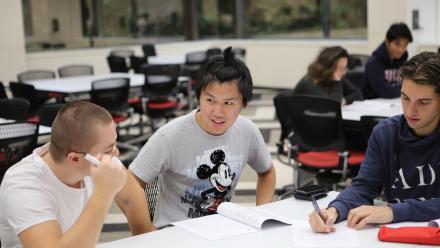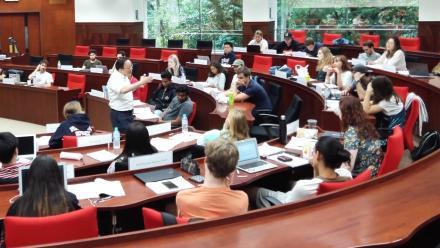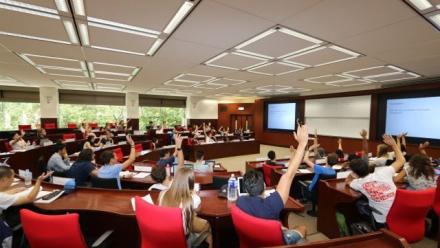Marketing is one of the core pillars of any organization, whether it’s for profit or non-profit one; and consequently, the purposes and goals will be also different. Particularly in business management, marketing involves every single process that begins from creating the product or service to selling it to the consumer and following-up on it to establish a relationship with the customer.
In ‘Introduction to Marketing’ taught by Prof. Ted Katagi from NUCB Business School, our Graduate School of Management, the students will learn about the marketing concepts and functions used in business through a broad scope. Thus, the students will explore the marketing proposition, the marketing mix (4Ps: Product, Price, Place, Promotion), Blue Ocean Strategy Framework and more importantly, how business managers use such tools to gain a competitive advantage in the global economy. Ultimately, the students will be encouraged to think strategically about a business and how they can come up with the best positioning for the company.
To face the constantly changing business environment, some of the current marketing issues will be also tackled in the class, such as Digital Marketing (including Social Media), Big Data Analysis, Building engagement through communities, etc.
On Week 4, the students had to prepare a HBS case about the use of big data at Gap: “Predicting Consumer Tastes with Big Data at Gap”.
Under the guidance of the instructor, students started with a discussion about how companies are trying to predict actions as outputs based on tons of inputs that go through system(s). With inputs from alternative sources, filtering and organizing them, the system’s algorithms will analyze them through different ways (machine learning, deep learning, etc.) and predict sales, fashion trends, etc. Being aware of the current developments in the world, students also raised questions about the lack of privacy or ethics.
The instructor also introduced the concept of correlation through the Coefficient of determination (r-squared). Correlation doesn’t equal causation: there’s a lot of correlation in big data but it doesn’t mean its causality. Big data is another way of doing business analytics.
Before diving deeper into the case, the students did an analytical framework in the class, 5 Forces of Porter (Bargaining Power of Buyers, Bargaining Power of Suppliers, Threat of New Entrants, Threat of Substitutes, and Competitive Rivalry), to study and analyze the fashion retail industry in order to have a better understanding of what it entails.
The main question of this case was whether the creative director of Gap should be kept or fired, and if big data should become the primary and leading focus while the creative director gets relegated to a secondary position.
For this discussion, the instructor put the students in the shoes of the decision makers and made them debate and argument for their respective positions, particularly the merchandiser vs creative director. It was found that in order to turn a fashion-oriented company into one that adopts big data more seriously - in order to change the mindset itself, leadership needs to be switched to the managers on the side of big data while having the creative director(s) play more of a supportive role. In reality, the creative directors were indeed fired and the sales went up in the following year.
Through the Case Method, students are able to bring unique perspectives to the classroom through their personal connection with the topic(s).

 Download
Download
 Infosession
Infosession
 Application
Application
 Open Campus
Open Campus











